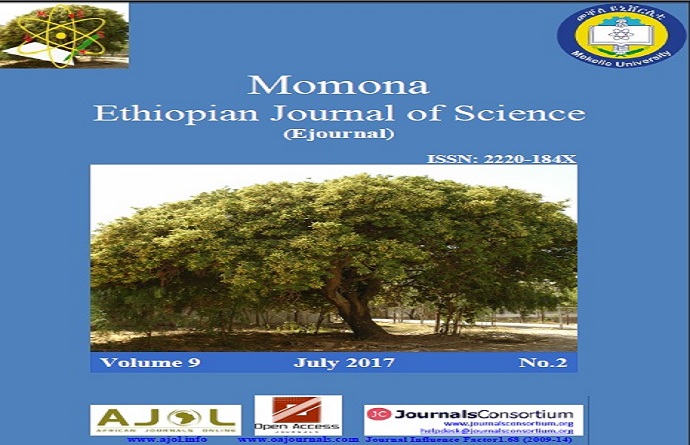Isolation and Characterization of Efficient Phosphate Solubilizing Bacillus (PSB) from Different Agro-ecological Zones of Tigray Soil, Ethiopia
Abstract
Applications of biofertilizer have great practical importance for increasing fertility of the soil and reducing environmental pollution. Screening and characterizing phosphate solubilizing Bacillus (PSB) strains from different agroecologies of Tigray soil and in vitro assessment for the adaptability under different abiotic stress would help in selecting the most efficient strain for use as biofertilizer. A total of 64 soil samples were collected from different agro-ecological zones of Tigray and checked for the presence, capability and efficiency of PSB. Out of 64 soil samples 21 of them were phosphate solubilizing. These phosphate solubilizing strains again incubate at 37˚C for 48h on pikovskaya medium to see efficacy of phosphate solubilization. Highest efficiency was recorded in MUB28, MUB47and MUB64 isolates and also tolerant to acidity and alkaline up to pH4 and pH8, respectively. And difference was recorded in saline tolerance among the strains: MUB47 is the most saline tolerance strain which tolerate saline up to 513mM of sodium chloride (NaCl) but MUB28 and MUB64 have tolerated saline up to 340mM of NaCl. The identification of efficient PSB candidate strains with salt & pH tolerant features in the soil sample could have an implication on the end-users to obtain the desired beneficial effect such as maintaining soil healthy, provision of adequate phosphorus from soil to the plant and improving crop yield of Tigray Agriculture. Based on the morphological, microscopic, biochemical and physiological characterization, it may be inferred that the diversity among these efficient PSB strains is low.
Downloads
References
Collins, C., H & Lyne, P., M. 1970. Microbiological Methods. ButterWorth and Co. (Publisher) Ltd., London, 169p.
CSA. 2013. Census Tabular Report [Online]. Ethiopia: Central Statistical Agency (CSA). Available: http://www.csa.gov.et/index.php/2013-02-20-14-51-51/census-tables.
More inside the PDF
Copyright (c) 2018 Momona Ethiopian Journal of Science

This work is licensed under a Creative Commons Attribution 4.0 International License.
COPYRIGHT AND LICENSE POLICY
The Momona Ethiopian Journal of Science accepts the manuscripts for consideration with the understanding that the manuscript has not been published and is not under consideration for publication elsewhere. Only original articles will be considered for publication if they have been published previously as abstracts, but not if they have been published previously as extended abstract (>1000 words). This applies to both electronic and print versions of the journal. The authors should assign copyright ownership to the Editorial Office of MEJS in the event that the manuscript is accepted for publication in the Momona Ethiopian Journal of Science. All accepted manuscripts must be accompanied by a copyright statement signed by all authors. A copy of the copyright form will be supplied along with the final reviewed version of the manuscript that is sent for final proof- reading. Authors may make multiple copies of the form if necessary and send to the Editorial Office with author’s signature(s) even individually.
All articles published by Momona Ethiopian Journal of Science (MEJS) are Open Access under the Creative Commons Attribution License (http://creativecommons.org/licenses/by/4.0). Under this license, authors retain ownership of the copyright for their content, and anyone can copy, distribute, or reuse articles as long as the author and original source are properly cited. In all these cases for re-use, the authors will be given proper credit to the original publication in MEJS.
